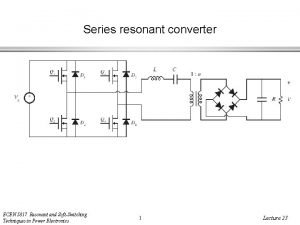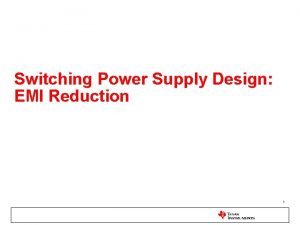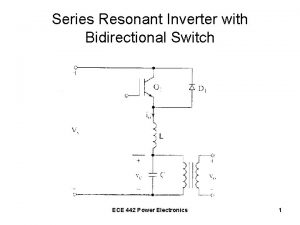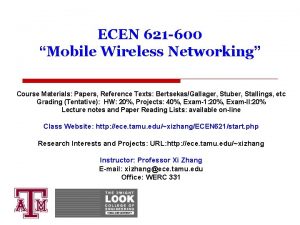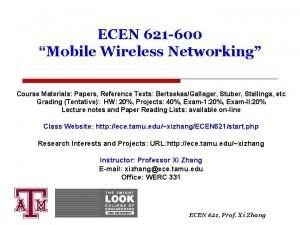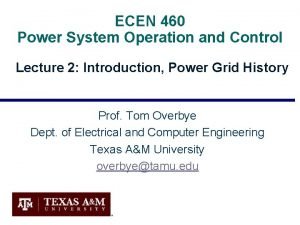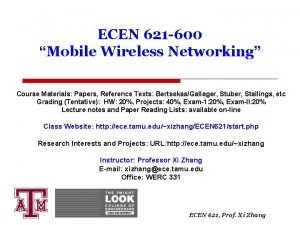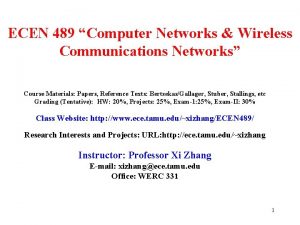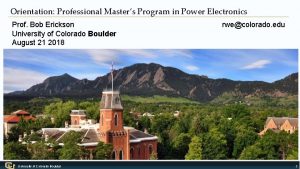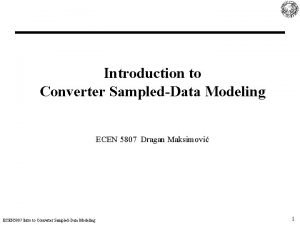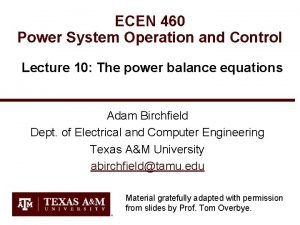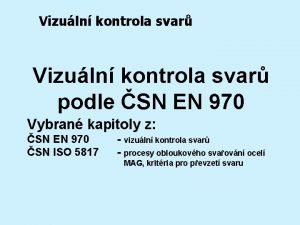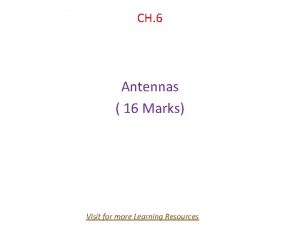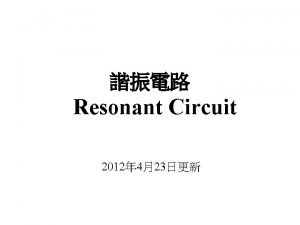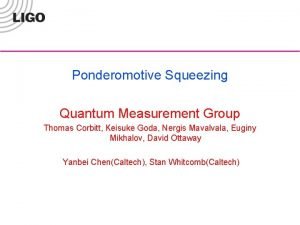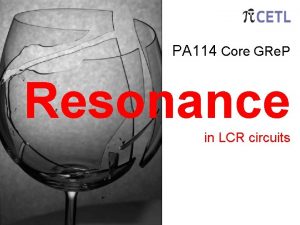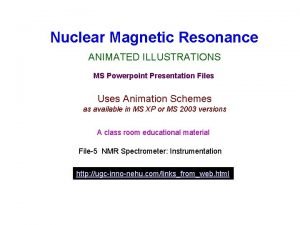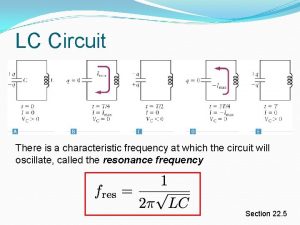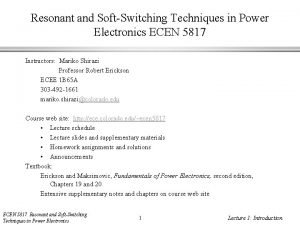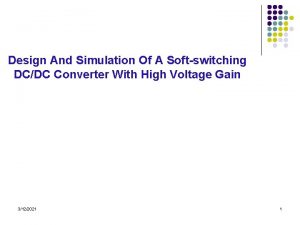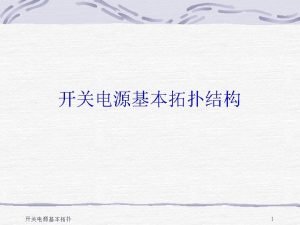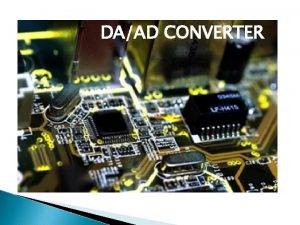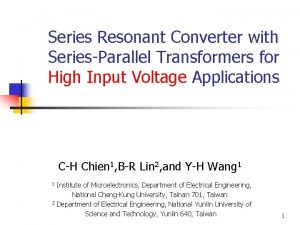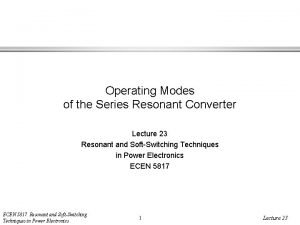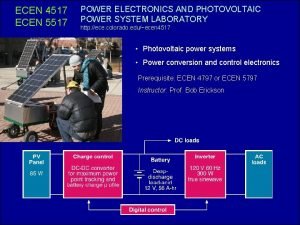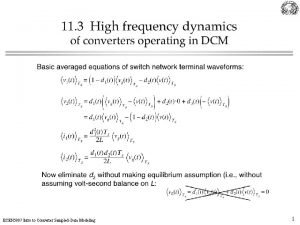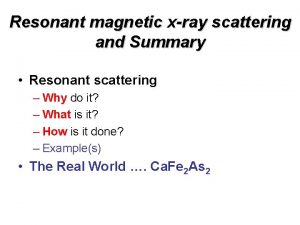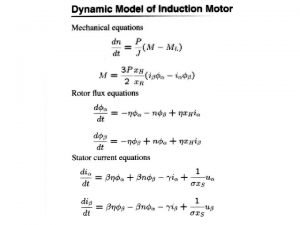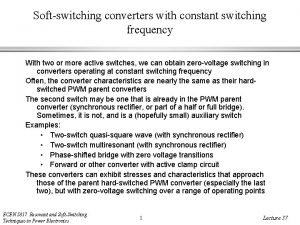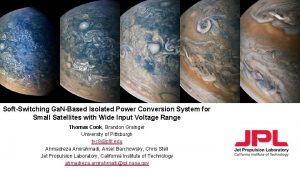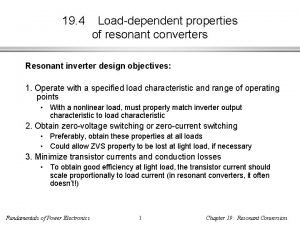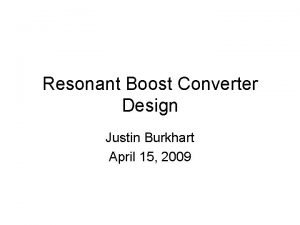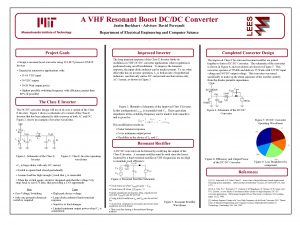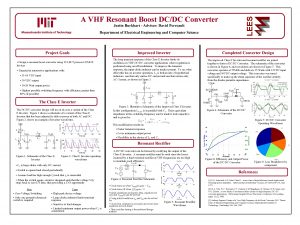Series resonant converter ECEN 5817 Resonant and SoftSwitching


























- Slides: 26

Series resonant converter ECEN 5817 Resonant and Soft-Switching Techniques in Power Electronics 1 Lecture 23

The output plane under frequency control ECEN 5817 Resonant and Soft-Switching Techniques in Power Electronics 2 Lecture 23

The output plane under diode conduction angle control ECEN 5817 Resonant and Soft-Switching Techniques in Power Electronics 3 Lecture 23

Summary of results k = 1 CCM (CCM below resonance) ECEN 5817 Resonant and Soft-Switching Techniques in Power Electronics 4 Lecture 23

Discontinuous Conduction Modes In the “type k” discontinuous conduction mode, the tank rings through k complete half cycles during each half switching period. The output diode rectifiers then become reverse-biased, and remain off until the input bridge transistors switch to initiate the next half switching period. Q: Why do the diodes decide to interrupt the ringing after k half-cycles, instead of k– 1, or k+1, or. . . ? ECEN 5817 Resonant and Soft-Switching Techniques in Power Electronics 5 Lecture 23

The k = 1 DCM ≥π(F≤ 1) ECEN 5817 Resonant and Soft-Switching Techniques in Power Electronics 6 Lecture 23

CCM Why the diodes become reversebiased Inductor voltage waveform explanation ECEN 5817 Resonant and Soft-Switching Techniques in Power Electronics 7 Lecture 23

Why the diodes become reverse-biased State-plane explanation ECEN 5817 Resonant and Soft-Switching Techniques in Power Electronics 8 Lecture 23

The k = 1 DCM Steady-state solution ECEN 5817 Resonant and Soft-Switching Techniques in Power Electronics 9 Lecture 23

The k = 1 DCM Mode boundary ECEN 5817 Resonant and Soft-Switching Techniques in Power Electronics 10 Lecture 23

State Plane Diagram k = 1 DCM ECEN 5817 Resonant and Soft-Switching Techniques in Power Electronics 11 Lecture 23

Summary of results k = 1 DCM ECEN 5817 Resonant and Soft-Switching Techniques in Power Electronics 12 Lecture 23

The k = 2 DCM ≥ 2π ( F ≤ 1/2 ) ECEN 5817 Resonant and Soft-Switching Techniques in Power Electronics 13 Lecture 23

Charge Arguments and Averaging ECEN 5817 Resonant and Soft-Switching Techniques in Power Electronics 14 Lecture 23

State Plane Diagram k = 2 DCM ECEN 5817 Resonant and Soft-Switching Techniques in Power Electronics 15 Lecture 23

The k = 2 DCM Steady-state solution Solution for radii ECEN 5817 Resonant and Soft-Switching Techniques in Power Electronics 16 Lecture 23

Summary of results k = 2 DCM ECEN 5817 Resonant and Soft-Switching Techniques in Power Electronics 17 Lecture 23

Summary of Results: k = 2 DCM Output plane characteristics ECEN 5817 Resonant and Soft-Switching Techniques in Power Electronics Control plane characteristics 18 Lecture 23

General Solution for the Steady-State Characteristics of the Series Resonant Converter Type k CCM Mode index k and subharmonic number ECEN 5817 Resonant and Soft-Switching Techniques in Power Electronics 19 Lecture 23

Type k CCM Steady-State Solution Elliptical output characteristic with Control plane characteristic ECEN 5817 Resonant and Soft-Switching Techniques in Power Electronics 20 Lecture 23

Type k CCM Waveforms Switch network output voltage Tank inductor current, odd k (ZCS) Tank inductor current, even k (ZVS) ECEN 5817 Resonant and Soft-Switching Techniques in Power Electronics 21 Lecture 23

Type k DCM Steady State Solution Type k DCM, odd k Output voltage Mode boundaries Type k DCM, even k and Output current Mode boundaries and Steady-state equivalent circuit model for even DCM: an effective gyrator. The converter exhibits current source characteristics. ECEN 5817 Resonant and Soft-Switching Techniques in Power Electronics 22 Lecture 23

CCM and DCM Boundaries ECEN 5817 Resonant and Soft-Switching Techniques in Power Electronics 23 Lecture 23

Complete SRC Characteristics Control Plane ECEN 5817 Resonant and Soft-Switching Techniques in Power Electronics 24 Lecture 23

SCR Output Characteristics Above Resonance ECEN 5817 Resonant and Soft-Switching Techniques in Power Electronics 25 Lecture 23

SRC Output Characteristics Selected Modes Below Resonance ECEN 5817 Resonant and Soft-Switching Techniques in Power Electronics 26 Lecture 23
 Ecen 5817
Ecen 5817 Buck converter and boost converter
Buck converter and boost converter Ece 442
Ece 442 Ecen 621
Ecen 621 Ecen 621
Ecen 621 Ecen 460
Ecen 460 Ecen 621
Ecen 621 Ecen 489
Ecen 489 Ecen 5797
Ecen 5797 Ecen 5807
Ecen 5807 Ecen 460
Ecen 460 5817
5817 Bevel groove weld
Bevel groove weld En 970
En 970 Non resonant antenna
Non resonant antenna Rlc-423
Rlc-423 Fluid valve
Fluid valve Resonant frequency
Resonant frequency Resonant frequency formula
Resonant frequency formula Resonant inductive coupling ppt
Resonant inductive coupling ppt Resonant frequency formula
Resonant frequency formula Series aiding and series opposing
Series aiding and series opposing Maclaurin series vs taylor series
Maclaurin series vs taylor series Balmer series lyman series
Balmer series lyman series Serie de taylor
Serie de taylor Taylor series lesson
Taylor series lesson Ibm p series
Ibm p series
